Australian Tropical Rainforest Plants - Online edition
Vitex trifolia L. var. trifolia

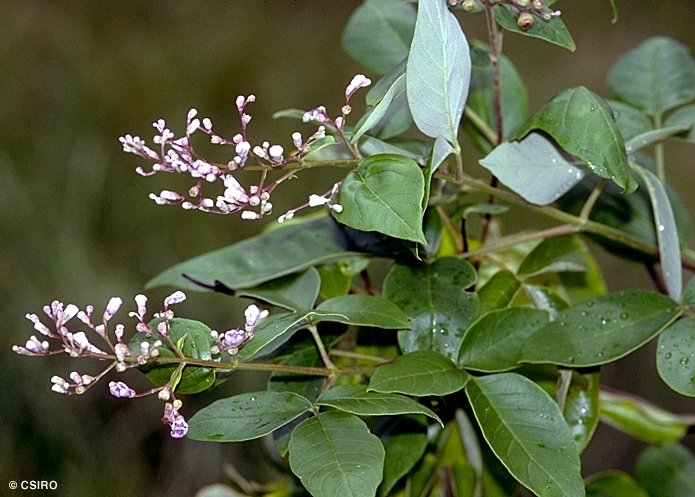
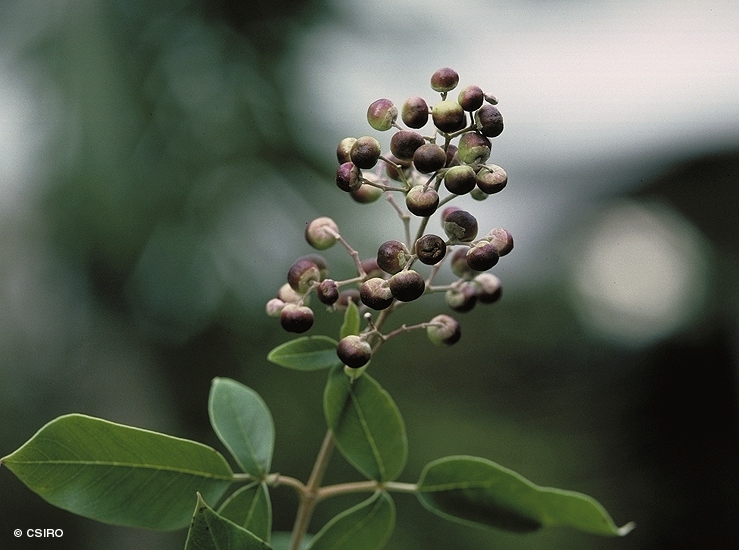
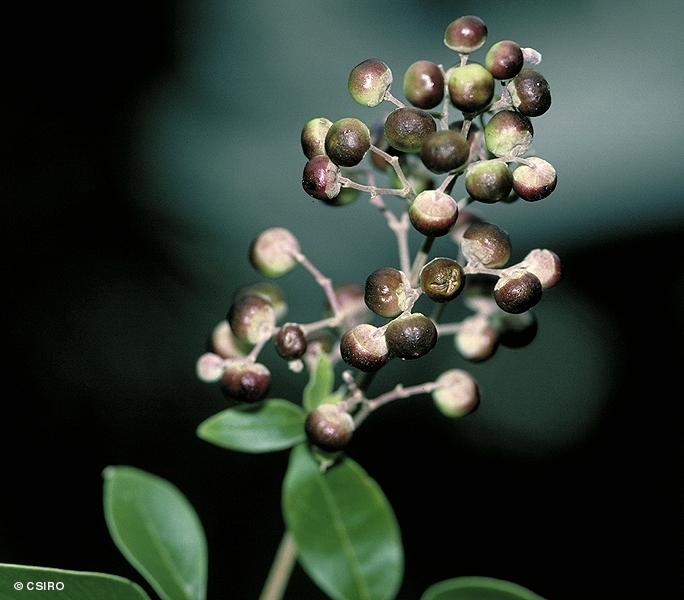
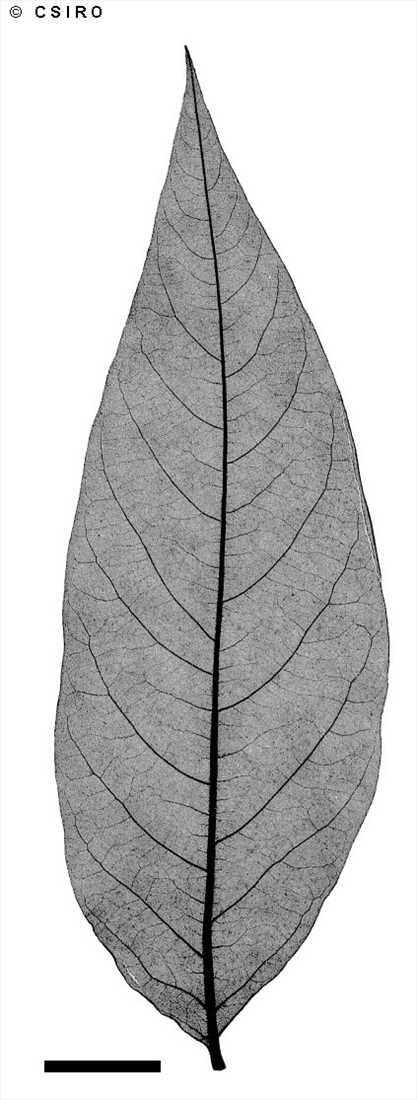
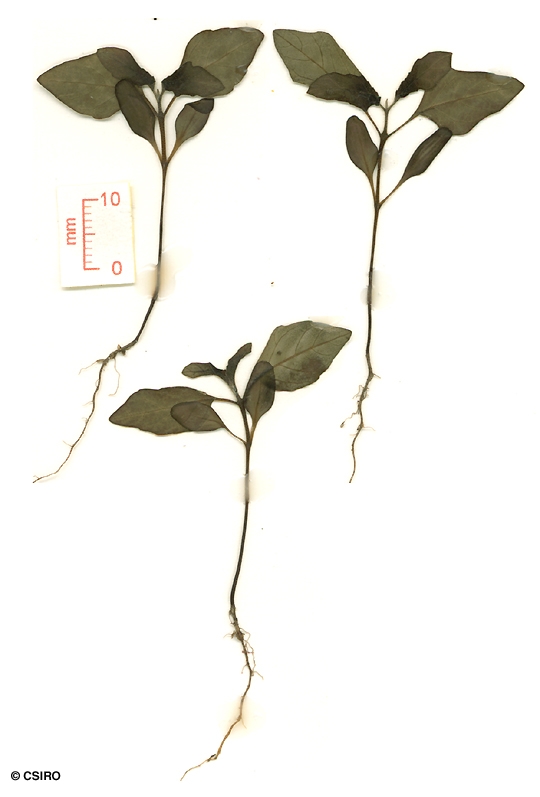

Chamisso, L.K.A. von (1832) Linnaea 7 : 107.
Common Blue Vitex; Lagondi; Three Leaflet Vitex; Simpleleaf Chastree; Sangari; Gendavasi
Usually grows into a small tree seldom exceeding 30 cm dbh but also flowers and fruits as a shrub.
Leaflet blades (or leaf blades) about 3-8 x 2-4 cm, almost white on the underside, emitting an odour when crushed, the odour resembling that of marigolds (Tagetes spp.) or calendulas (Calendula spp.). Stalk of the middle leaflet longer than those of the lateral leaflets. Midrib depressed on the upper surface.
Inflorescence about 5-25 cm long, pedicels nil or very short. Calyx obscurely 2-lipped with five small teeth at the apex or almost truncate, tomentose and glandular on the outer surface but glabrous within, about 2-4 x 1.5-3 mm. Corolla pubescent and glandular outside, villous inside the tube, tube nearly twice as long as the calyx, tube nearly cylindrical, about 4-6 x 2-3 mm, wider at the top, lobes about 1-5 mm long. Stamens exserted, filaments filiform, glabrous in the upper part but villous near the base, 3-6 mm long, anther locules divaricate at the base. Ovary globose, gland-dotted in the upper part, glabrous in the lower part, about 1-1.5 mm diam. Style exserted, glabrous, filiform, about 5-8 mm long, stigma shortly bifid.
Fruits globular, about 4-6 mm diam., calyx accrescent, persistent at the base. Seed enclosed in a stone about 4.5 x 3 mm, seeds about 3 x 1 mm. Embryo about 2.5 mm long.
Cotyledons oblong, about 5-10 mm long. First pair of leaves ovate or elliptic. Margin entire or with 1-3 indistinct blunt teeth on each side. Upper surface clothed in very short fleshy hairs visible with a lens. Lower surface with very small honey-coloured glands which are just visible with a lens. At the tenth leaf stage: leaves broadly ovate, apex acute, base rounded, leaflets of trifoliolate leaves +/- elliptic, base cuneate or attenuate, apex acute, upper surface with a few, very short, pale hairs towards the base; petiole, stem and terminal bud densely clothed in very short, pale hairs. Seed germination time 17 to 75 days.





